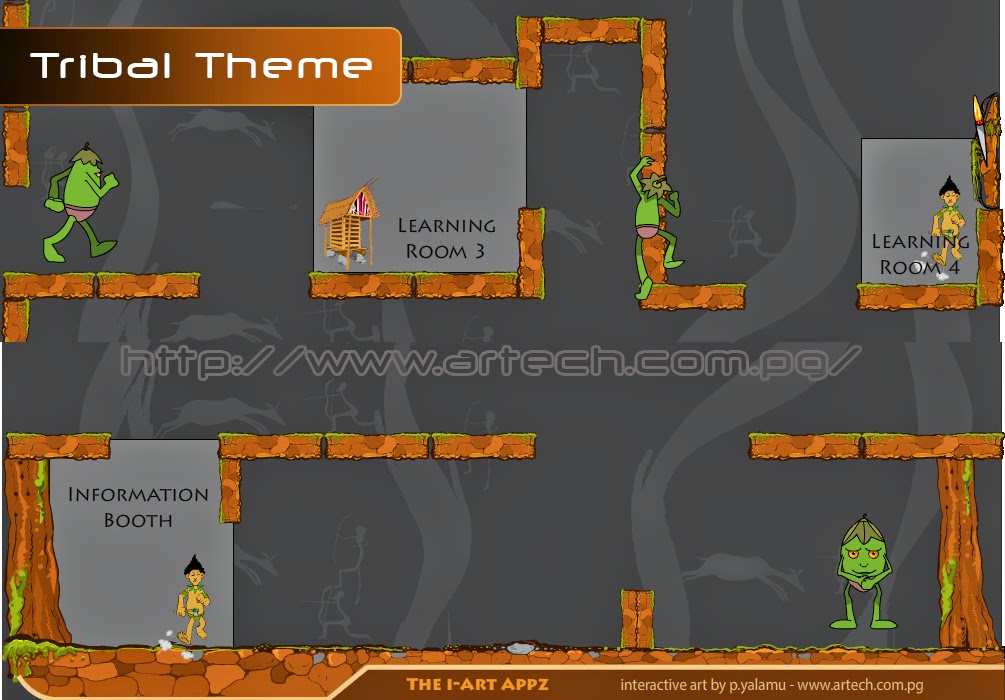Recently, I was invited to present my pre-research slides at the "Research and Short Professional Courses Workshop" (held on the 23rd of April 2015) to the senior Staff of the Open College, University of Papua New Guinea about my drive to bridgea the Digital Divide in Papua New Guinea through the development and establishment of a virtual classroom. At this workshop, I shared some of the references relating to online learning especially using a virtual classroom (Virtual Klasrum [VK], as I called to localize the term).
 |
| sharing mapped locations of project |
I also shared some of the pre-research activities and findings I did with my people at the village level. The concept was new to all of those who were present at the workshop; though it was related to an element of what had already been introduced into the college through their Open Sourced Moodle system which they've developed and trialed out. The VK/VC concept exploded their imaginations further to the endless possibilities that technology can provide to take learning further to our rural areas.
The Virtual Klasrum research I carried out started in 2012 after I realized the need to support the people in the village and nearby villages with basic knowledge that are necessary for their development, especially by providing information that is vital to help them sustain their livelihood through small projects they intend to initiate.
 |
| clarifying the vk concept |
The idea was to create a knowledge platform that is available 24/ 7 for people in my village or even other remote villages to access whenever they stumbled into situations requiring seeking of knowledge on "How-Tos" to get them moving so that can motivate them to excel in whatever ideas they come up with. The challenge is to create a system that can be accessed by everyone including those in remote places using available services. There are countless barriers to achieve the fruition of such ideas however there are also possibilities because the advancement of technology today and in the future will help make them happen.
 |
| staff interacting during question time. |
Since it was my first presentation regarding the exposure of this pre-researched subject, I prepared it to be pure theoretical so that was made known to the attending staff. However, I did gave references to evidences of what had already been done as well as carried out so far and what other things or areas that I hoped to advance into. Above all, the overall intention is to create a living product that can serve the entire nation, connecting our people in the village with those in urban areas including the outer world. Moreover, this living product can be part of the people and be a system that provides streamed information that are necessary for them so they wouldn't rely much on continuous outside support other than being reliable to help contribute to nation building.
 |
| discussions after the presentation. |
(Photographs: courtesy of ArTech, shots by Bingmalu Yalamu)


